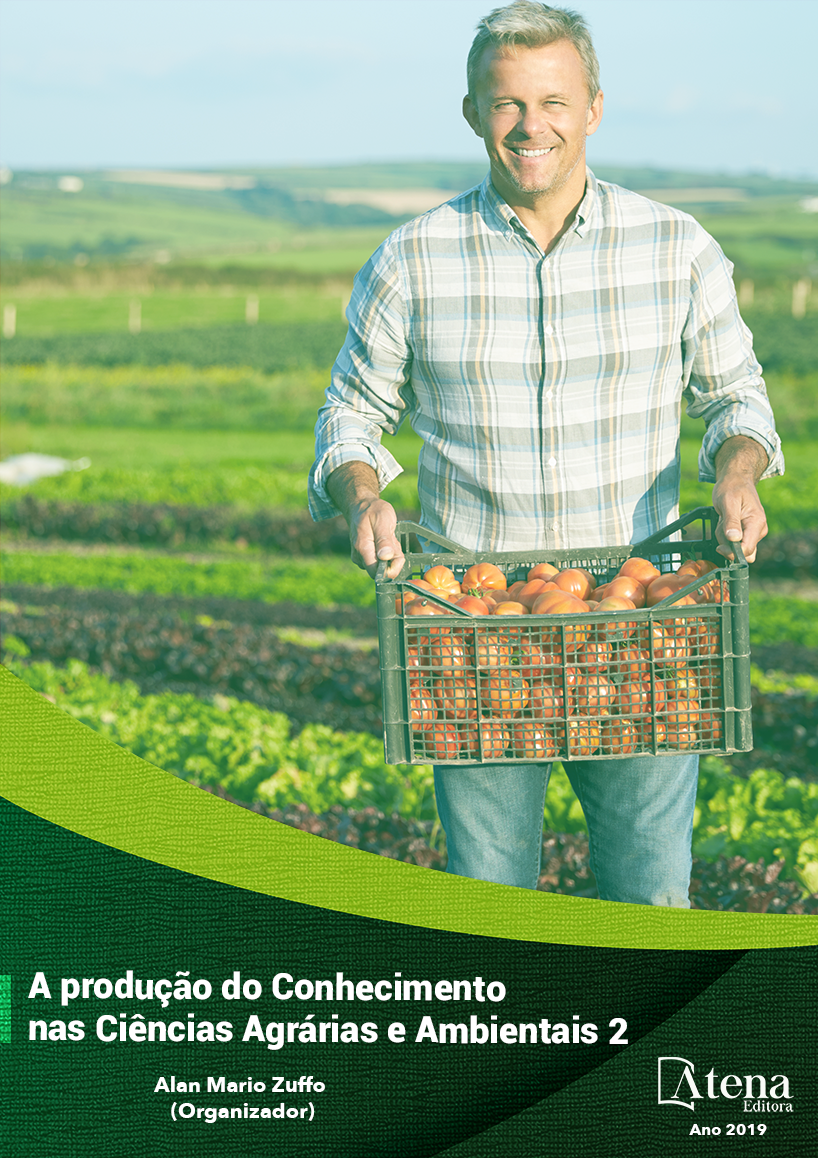
DESENVOLVIMENTO DE MUDAS DE CACAUEIRO GENÓTIPO COMUM BAHIA PRODUZIDOS NO OUTONO SOB DIFERENTES LÂMINAS DE IRRIGAÇÃO.
Vários são os fatores que podem
interferir na qualidade final das mudas produzidas
em viveiro, dentre esses fatores estão a nutrição
e a irrigação, comprometendo assim o sucesso
da implantação da cultura. No presente capítulo
objetivou-se, verificar o desenvolvimento de
mudas de cacaueiro Comum Bahia, produzidas
no período de outono, em função de diversas
lâminas de irrigação, a fim de obter mudas de
boa qualidade e com menor custo de produção.
O experimento foi conduzido no setor de
horticultura do Instituto Federal do Espírito
Santo – IFES Campus Itapina, dentro de estufa
agrícola, em seis ambientes individualizados
com dimensões de 2,20 m de comprimento por
1,10 m de largura, isolados por lona plástica
transparente nas laterais. Os tratamentos
consistiram na aplicação de seis lâminas diárias
de irrigação, correspondendo a 4, 6, 8, 10, 12
e 14 mm d-1. O delineamento experimental foi
inteiramente casualizado (DIC), onde cada
tratamento foi composto por 36 plantas, todas
úteis, totalizando no experimento 216 mudas.
Por apresentar melhor índice de Dickson e, de
forma a otimizar o recurso hídrico na produção
de mudas com qualidade do cacaueiro do
genótipo Comum Bahia, recomenda-se a
lâmina de 10 mm.d-1.
DESENVOLVIMENTO DE MUDAS DE CACAUEIRO GENÓTIPO COMUM BAHIA PRODUZIDOS NO OUTONO SOB DIFERENTES LÂMINAS DE IRRIGAÇÃO.
-
DOI: 10.22533/at.ed.85219260417
-
Palavras-chave: Theobroma cacao L., mudas, índice de Dickson.
-
Keywords: Theobroma cacao L., seedlings, Dickson index.
-
Abstract:
There are several factors that
can interfere in the final quality of the seedlings
produced in nursery, among these factors are nutrition and irrigation, thus compromising the success of the implantation of the
crop. In the present chapter, the objective of this study was to verify the development
of Common Bahia cacao seedlings, produced in the autumn period, due to several
irrigation slides, in order to obtain seedlings of good quality and with lower production
costs. The experiment was conducted in the horticulture sector of the Federal
Institute of Espírito Santo - IFES Campus Itapina, in an agricultural greenhouse, in
six individualized environments with dimensions of 2.20 m long and 1.10 m wide,
isolated by a transparent plastic canvas on the sides. The treatments consisted in the
application of six daily irrigation slides, corresponding to 4, 6, 8, 10, 12 and 14 mm d-1.
The experimental design was completely randomized (DIC), where each treatment was
composed of 36 plants, all of them useful, totalizing in the experiment 216 seedlings.
Due to the better index of Dickson, and in order to optimize the water resource in the
production of seedlings with cacao quality of the Comum Bahia genotype, the 10 mm.d1
blade is recommended.
-
Número de páginas: 15
- Robson Prucoli Posse
- Stefany Sampaio Silveira
- Sophia Machado Ferreira
- Francielly Valani
- Rafael Jaske
- Camilla Aparecida Corrêa Miranda
- Inês de Moura Trindade
- Sabrina Gobbi Scaldaferro


